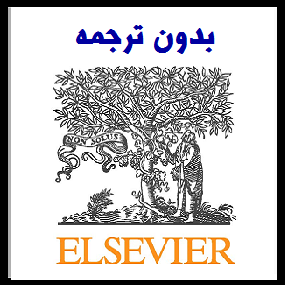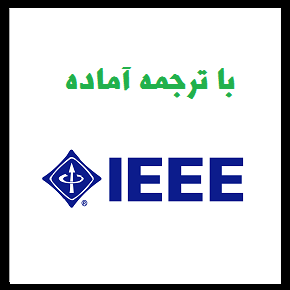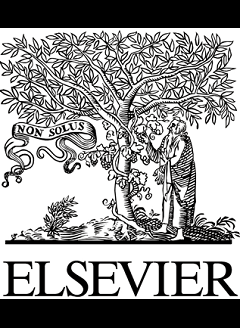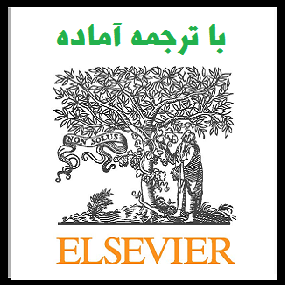دانلود رایگان مقاله ساختار بندی پروژه های تحقیق و توسعه درون سازمانی – سال 2020


مشخصات مقاله:
عنوان فارسی مقاله:
ساختار بندی پروژه های تحقیق و توسعه درون سازمانی: به سوی درک بهتر معماری پروژه به عنوان یک تاثیر متقابل میان هماهنگی فعالیت و ادغام دانش
عنوان انگلیسی مقاله:
Structuring inter-organizational R&D projects: Towards a better understanding of the project architecture as an interplay between activity coordination and knowledge integration
کلمات کلیدی مقاله:
پروژه تحقیق و توسعه بین سازمانی، چند بازیگر، معماری، ساختار، مدولار بودن، هماهنگی فعالیت، ادغام دانش، همکاری، مدیریت پروژه
مناسب برای رشته های دانشگاهی زیر:
مدیریت
مناسب برای گرایش های دانشگاهی زیر:
مدیریت پروژه، مدیریت دانش
وضعیت مقاله انگلیسی و ترجمه:
مقاله انگلیسی را میتوانید به صورت رایگان با فرمت PDF با کلیک بر روی دکمه آبی، دانلود نمایید. برای ثبت سفارش ترجمه نیز روی دکلمه قرمز رنگ کلیک نمایید. سفارش ترجمه نیازمند زمان بوده و ترجمه این مقاله آماده نمیباشد و پس از اتمام ترجمه، فایل ورد تایپ شده قابل دانلود خواهد بود.
فهرست مطالب:
Abstract
Graphical abstract
Keywords
1. Introduction
2. Theoretical framework
2.1. Structuring inter-organizational R&D projects: Project management perspective
2.1.1. Inter-organizational projects: Structuring for activity coordination
2.1.2. Inter-organizational R&D projects: Structuring for knowledge integration
2.2. Structuring inter-organizational R&D projects: An innovation management perspective
2.2.1. Knowledge integration
2.2.2. Modularity for knowledge integration
2.2.3. Modularity for knowledge integration in inter-organizational structures
2.3. Towards a conceptual framework
3. Research setting
4. Research design
4.1. Case selection and data collection
4.1.1. Phase one. Identification of project architectures
4.1.2. Phase two. Understanding the effect of the project architecture
4.2. Data analysis
5. Results
5.1. Identification of three main types and six sub-types of project architectures
5.2. Implications of the types of architectures
5.2.1. Workflow-integrated architecture: Knowledge-disintegration but a collaborative final output, requiring high managerial effort and strong managerial skills
5.2.2. Nearly decomposable architecture: Several modules with variety of collaborative outputs; the intensity of integrative module sets requirements for strong scientific/technical competences of the project manager
5.2.3. Decomposed architecture: Knowledge-integration within modules but workflow-disintegration between the modules; easy project management but little added value from the large inter-organizational setting
6. Discussion
7. Conclusion
7.1. Contributions
7.2. Future research directions
Declaration of Competing Interest
Acknowledgments
Funding
References
قسمتی از مقاله انگلیسی:
1. Introduction
Society has taken the ‘projectification’ path (Lundin et al., 2015; Midler, 1995): organizations increasingly engage into interorganizational projects (Stjerne, Söderlund & Minbaeva, 2019). Research, development and innovation (R&D) are affected by this trend: over the last decades, they have become more collaborative (Chesbrough, 2005) and more project-organized (Kim, Kim & Lee, 2015). Multi-actor publicly funded inter-organizational R&D projects are a propitious setting for the generation of new knowledge, thanks to the diversity of the knowledge base of the actors and the possibilities for knowledge combination (Nahapiet & Ghoshal, 1998). These projects have characteristic properties which are different from other inter-organizational projects: autonomy and equality of the organizational actors (Bor, 2014) and bottom-up self-organization in response to competitive calls, considerable numbers of heterogeneous actors, collective responsibilities, significant public funding, and lack of structural project flexibility (vom Brocke & Lippe, 2015). These projects address problems which are ambiguous, uncertain and complex at the same time (König, Diehl, Tscherning & Helming, 2013). Inter-organizational R&D projects are difficult to manage (Lin, Müller, Zhu & Liu, 2019; Söderlund & Tell, 2011), especially in the multi-actor setting. The project structure defines the way how the tasks are decomposed and coordinated (Mintzberg, 1979), it significantly contributes to the organization of the collaboration (Calamel, Defelix, Picq & Retour, 2012) and to the success of the project (Caniëls, Chiocchio & van Loon, 2019; Dietrich, Eskerod, Dalcher & Sandhawalia, 2010). In the presence of multiple actors, the way in which the collaboration is arranged (Fjeldstad, Snow, Miles & Lettl, 2012), or the structure of interdependencies between actors in an organizational setting (Capaldo, 2007), is often called architecture, defined in terms of strength and intensity of links, or couplings, between the nodes in the network, or actors (Orton & Weick, 1990). Couplings are often studied using social network theory, which suggests that the structure and the strengths of relationships or couplings between the actors in the network explain differences in outcomes for these actors (Borgatti, Mehra, Brass & Labianca, 2009; Coleman, 1988; Granovetter, 1973). In the context of collaborative research and innovation, dynamic knowledge integration leading into creation of new knowledge has become increasingly important (Berggren, Bergek, Bengtsson & Söderlund, 2011); and the project structure provides a framework to organize knowledge integration (Lin et al.,2019). Abundant literature on inter-organizational projects, ecosystems and networks mostly focuses on inter-firm collaboration, in most cases with one focal actor, but it is not well understood how to best set up inter-organizational R&D projects (vom Brocke & Lippe, 2015) where the both activity coordination and knowledge integration are required. Their interplay defines the core architectural collaborative patterns in inter-organizational R&D projects, called “project architecture” in this paper.



